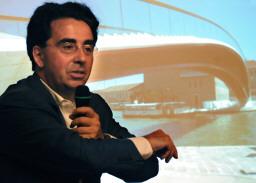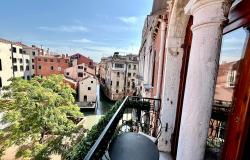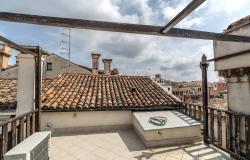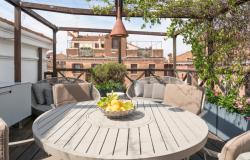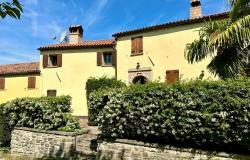A new high-tech bridge over Venice's Grand Canal was named after the Italian Constitution Tuesday but Venice Mayor Massimo Cacciari confirmed its inauguration by Italian President Giorgio Napolitano had been cancelled.
The bridge, designed by world-famous Spanish architect Santiago Calatrava, has been dogged by controversy because of cost overruns, concerns about its stability and an initial lack of access for the disabled.
''I think Constitution Bridge is right because it is the 60th anniversary of the Constitution,'' Cacciari said as the bridge was presented.
''It's a good name,'' he said.
Cacciari said he had taken the personal responsibility of cancelling the inauguration, slated for September 18, against the wishes of Calatrava and Venice city council.
There will be no public ceremony but the mayor will take the people who have worked on it to a top city watering hole to toast its opening, he said.
''We'll do that, for sure. We'll go somewhere good together, everyone who believed in it and worked on it, not those who just slammed it. All those who wanted this extraordinary piece of architecture''.
Calatrava said the cost overruns had ''nothing to do'' with him but were caused by an initial underestimation of costs.
''We've put all our hearts into this bridge for this city that we love. It isn't a swindle,'' said the architect,
who designed the stadium for the Athens Olympics in 2004.
An original price tag of four million euros in the mid-1990s has swelled to what the council says is more than 11 million.
The local branch of the right-wing National Alliance party, a long-running critic of the bridge, claims that the final cost could be twice that due to legal disputes with the construction company.
Calatrava also noted that the need for disabled access, which is costing an extra million, had not been raised at the planning stage.
Asked if he had any regrets, Calatrava said ''No, what counts is the work''.
The archbishop of Venice, Cardinal Angelo Scola, was one of those on hand for the presentation.
''I really like it,'' he said.
''It's nice to have something new added to the old Venice at last''.
The date of the bridge's opening ceremony has been hushed up because of the polemics surrounding it.
The bridge will now be opened without fanfare, ''maybe on September 18, but it might be September 17 or 19,'' Venice council's public works chief, Mara Rumiz, said last week.
The council has pledged to install an automatic lift for people with mobility problems in the next few months.
First planned in 1996, the bridge has been dogged by controversy and delays from the start.
The structure was installed two years late last summer amid fears that the canal banks wouldn't be able to hold it up properly.
In February Cacciari had to dismiss fears that the bridge might be shaky after a local newspaper quoted project chief Roberto Casarin as saying it had moved ''about a centimetre'' in a load-bearing trial.
Other alterations to the original plan included the decision to add stairs, in order to make the structure more visible to tourists, and to use two kinds of stone instead of one.
Once opened, the bridge will link Venice's railway station with Piazzale Roma, a car, bus and ferry terminal on the opposite side of the Grand Canal.
The sleek arc of steel accessed by a flight of glass steps spans 94 metres from one bank to the other.
The bridge will be the fourth over the lagoon city's Grand Canal and the city's first new bridge in 70 years.
Calatrava's other trademark buildings include an auditorium and sealife centre in his native Valencia and the Milwaukee Museum of Fine Arts.
He has also designed three bridges over the Trinity River in Dallas and the Chicago Spire, set to be the tallest building in North America.
He has offices in Zurich, Paris, New York and other cities around the world.
